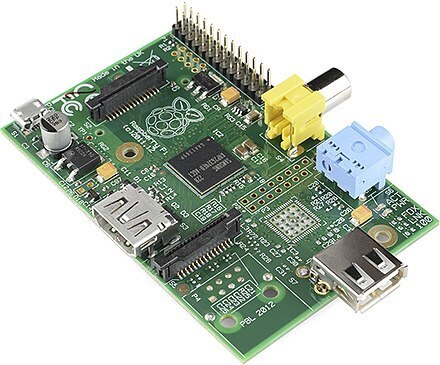Increasing my time on the computer since learning software development has increased my curiosity about computers as a device. What makes a computer? How does a computer connect to the internet? What is the relationship between hardware and software? I came across Raspberry Pi and decided to explore what it is, how it is used, and what it is used for.
Raspberry Pi is a series of single-board computers created by the Raspberry Pi Foundation. When I searched what a Raspberry Pi was, what I saw did not look like the computers I was familiar with. That’s because single-board computers are fully functioning computers built on a single circuit board. These boards have a microprocessor, input-output functions, and memory built on as well as a predetermined amount of RAM (Random Access Memory). Raspberry Pi computers are built on Arm architecture, which describes the rules for how the hardware and software interact. In addition to the Arm architecture, Raspberry Pi also utilizes the Linux operating system and includes amenities like general-purpose input-output pins that allow you to “explore the Internet of Things”. IBM defines the Internet of Things as a “network of physical devices that have embedded sensors, software, and network connectivity that allow them to collect and share data”.
Since 2012, Raspberry Pi has 3 series of computers with varying generations. Most generations have 2 models: Model A and Model B; Model A is more affordable but has less RAM and ports. The first original Raspberry Pi computer only had 256 megabytes of RAM. The latest edition, Raspberry Pi 5, has a 4 GB RAM option and an 8 GB RAM option, both are twice as powerful as the Raspberry Pi 4. To put it into perspective, 4 GB or 8GB is sufficient for browsing the web and web processing, per Lenovo, which is 15X more RAM than the original Raspberry Pi.
Pictured above is an [early Raspberry Pi 1 Model A]. (https://en.wikipedia.org/wiki/Raspberry_Pi).
Pictured above is a Raspberry Pi 5.
There are many options for projects you can choose with your Raspberry Pi that can help you learn computer science, machine learning, and programming. A common project is to build your PC but you can turn devices into smart devices with the GPIO pins that give you access to the Internet of Things. However, there are more adventurous avenues to take with your computer. Brad Chacos lists 10 projects you can do with your computer. You can set up a home-theater PC with the $35 original Raspberry Pi, and with the $21 TV accessory, you can read TV signals. Or you can turn your TV into a smart TV with Raspberry Pi 2 – 4, letting you browse the internet. Raspberry Pi computers are generally under $100, with the average being around $35, and the cheapest, Raspberry Pi Zero is $5, you don’t burn holes in your pockets by investing in one.
Pictured above is the Raspberry Pi Zero, introduced in 2015.
Raspberry Pi’s main supported operating system Pi OS (formerly known as Raspbian), is open-source and runs open-source software. If you’re looking into programming your Raspberry Pi, Vibha Gupta lists programming languages that are better suited for it. The more popular options include, but are not limited to Python, C, and C++. But those of us who know JavaScript should fear not because Raspberry Pi supports JS and jQuery.
In conclusion, the single-board computer Raspberry Pi has a ton of might and versatility and is something I would like to explore as a software developer who doesn’t know much about the technology she uses daily!



![Introduction to Docker Containers [With Commands]](https://media.dev.to/cdn-cgi/image/width=800%2Cheight=%2Cfit=scale-down%2Cgravity=auto%2Cformat=auto/https%3A%2F%2Fdev-to-uploads.s3.amazonaws.com%2Fuploads%2Farticles%2Fd8oklcpekix12dp929sj.png)
